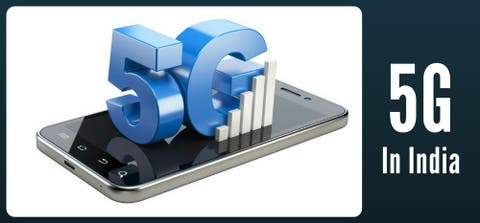The Indian smartphone market is one of the most lucrative markets in the world and it is currently the second largest smartphone market behind China. However, India is a very dicey market and OEMs that hopes to make an impact in India are very sensitive to their prices. Despite the huge revenues that come out from the Indian smartphone market, it is still behind in 5G development. What is the actual cause of this?
According to the Indian Economic Times, although the Indian government is expected to launch 5G services by the end of 2020, industry experts said that the country’s progress is slow and it will probably trail the likes of South Korea. Leading markets such as Japan, Australia, the United States, China, France, and Germany will launch 5G services by the end of 2019 or early 2020.
After missing the early bus in the 3G and 4G eras, some of the main reasons why India continued to show backwardness in the 5G era include the low laying rate of optical fiber infrastructure, the lack of relevant use cases, and the weak development of the smart home equipment market.
One of the major obstacles to India’s 5G target is the lack of adequate fiber connections – less than 20% of the country’s communications towers are connected via fiber optics. This will limit the data transfer capability of connecting the core of the mobile network to the node and then to the communication tower. Reliable fiber-optic networks are critical to supporting 10Gbps transmission rates in 5G networks and next-generation applications such as video on demand, IoT and smart cities.
Director General of Tower & TR Dua Infrastructure Suppliers Association, said “If 5G is to succeed in India, at least 70-80% of mobile communication towers must be fiberized. Otherwise, due to the current use of microwave spectrum by Indian backhaul networks, data transmission speed will continue to be severely limited.” TV Ramachandran, chairman of the Broadband India Forum, agrees. He said. “If we don’t provide strong fiber connectivity, most 5G use cases are not possible.”
The financial pressures of the telecommunications industry and the lack of a mobile phone ecosystem have caused India’s 5G spectrum auction to be postponed until the end of 2019. It is believed that even if 5G spectrum auctions are held at that time, huge debts and excessive auction reserve prices may further curb the ambitions of telecom operators, especially for veteran telecom operators like Vodafone Idea and Bharti Airtel.
The construction and maintenance of fiber-optic networks and the poor coverage of 4G networks in rural and small towns may further hinder the early deployment of 5G commercial use cases in India. So it’s no surprise that 5G smartphones will not be available in the Indian market until 2020, although early adopters may be available next year.
Bati Telecom, which is under the control of Sunil Mittal, recently said that the current popular 5G use cases, such as “driverless cars and telesurgery are not practical in the Indian market”, which is why the company expects India’s 5G deployment to take at least four years. He also said that the company is not eager to bid for a 5G spectrum.
